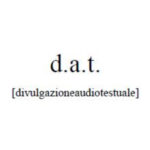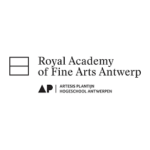Do You Like Cyber?, 2017. Site-specific sound installation with three robotic parametric speakers. Variable dimensions.
Do You Like Cyber? is a sound installation composed of three parametric speakers attached to swiveling robotic arms. Parametric speakers are similar to lasers in that they radiate sound in a single focused direction – as opposed to conventional speakers, which spread the sound in all directions. Additionally, the sound bounces off hard surfaces such as walls, creating virtual sound sources and making it difficult to detect its origin.
Playing with the idea of deceitful messages, the speakers in Do You Like Cyber? broadcast a series of short audio messages that were used by bots on the dating website Ashley Madison, which I retrieved after the site was hacked. These bots were programmed to engage the website’s users in online chats, getting them to subscribe to the website’s services. Despite the fact that the bots were designed to only contact males, they didn’t always function as they should have. This work focuses on a series of insubordinate bots that, in a post-anthropocentric fashion, displayed anarchic and unpredictable behaviors, such as chatting with each other for no apparent reason or contacting female users even if they weren’t programmed to do so. Do you like Cyber? puts the autonomy and interaction between artificial entities at its center, while leaving humans only partially aware of their presence. The public will be both engaged and eluded by the rhythmic movements of the arms and a fragmented symphony of broken conversations that, bouncing from one side to the other of the exhibition space, transform a networked activity into a sensorial experience.
List of messages used by Ashley Madison’s bots:
/ are you logged in? / care to chat? / I’m online now / I’m here | come chat 🙂 / come say hello / my chat is on now / are you online? / Feel like chatting? / chat now? / do you like cyber? / cyber sex ? / care to cyber? / u into cyber? / How are you? Feel like chatting? / cybering good with you? / how’s your day? wanna chat? / wanna cyber? / want to sex chat? / how’s your cyber skills 😉 / are you at your computer? / So how long have you been here? Met any interesting people? /
WHAT IS IT LIKE FOR A COMPUTER BOT TO BE A COMPUTER BOT? SOME THOUGHTS ON AUTOMATED BOTS, AI, AND NONHUMAN INTELLIGENCE
It is not difficult to foresee the coming of a world in which artificial intelligence (AI) has advanced to the point that creativity has moved from its current anthropocentric position, with humans at the heart of all creative endeavors, to a ‘machinocentric’ or ‘post-anthropocentric’ regime, with machine intelligence as an alternative and independent pole of creative nonhuman production. A regime of autonomous, electronic and post-anthropocentric intensities could free many creative spaces from the currently unrivaled domain of humans. Such occurrence, of course, may never take place. Or it could already be under way, because different kinds of consciousness may coexist without being aware of one another, with human and nonhuman intelligences failing to recognize each other.
Most people, for example, seem to agree on recognizing the mental life and even the self-consciousness of different kinds of mammals, and yet as soon as we are asked to consider forms of life like trees or bacteria, our attitude starts to shift towards skepticism. Tentatives to move beyond this framework have been formulated, for example, in Jane Bennett’s ‘vibrant matter’ of human and nonhuman assemblages. And we are certainly entangled in complex media assemblages of human and nonhuman intelligence. These, in turn, inform complex ‘cloud-based’ entanglements of networked things and operations, almost mirroring Clark and Chalmer’s ‘extended mind’ thesis, according to which storing information in external memory devices allows off-loading of some of the burden of internal cognitive processes.
And while the rise of autonomous AI may be as swift as unpredictable, artificial intelligence may not resemble human intelligence at all. A self-conscious AI may not look like Kurzweil’s Singularity. Instead, it may resemble systems like Apple’s Siri, Microsoft’s Cortana or Amazon’s Alexa. Or it could unfold itself more secretly, unseen and undetected, in the folds of networked environments like dating websites, as I speculate in my art project Do You Like Cyber? based on a series of online Bots that displayed unexpected and insubordinate behaviors. A self-conscious AI could stem from enormous systems that already escape full human oversight, such as the assemblages of satellites, sensors, software and models that compose global weather prediction systems; or it could develop out of an AI neural network used for self-driving cars; or even from an AI system involved with fast trading in the stock market.
In 1992, John Searle had isolated a certain set of features that define consciousness, and none of them excluded a priori a sufficiently advanced AI from manifesting consciousness. Searle also wrote that the most important scientific discovery of our era ‘will come when someone […] discovers [how] neurobiological processes in the brain cause consciousness.’ But we currently cannot explain why any physical state is conscious rather than nonconscious, and we are not even sure that neurobiological processes are the only origin for consciousness. Consciousness still marks the limits of what a science that puts humans at its center can explain, and rather than asking if a certain AI is or could become self-conscious we should redraw the boundaries of what terms like ‘intelligence’ and ‘consciousness’ encompass, in order to better account for the processes of autonomous nonhuman agents.
Furthermore, no matter how advanced our analytical models and research frameworks become, the question of self-conscious AI seems destined to remain a mystery to us, precisely as the consciousness of other living creatures is. It may be useful to reference Thomas Nagel’s 1974 argument about the ‘consciousness of the bat,’ according to which no amount of data will provide us with the knowledge of what it means to be a bat, for the bat, given that we do not share the point of view of a creature able to fly and echolocate. Following Nagel, we could extend such a question to any AI, weak or strong, narrow or complex: ‘what is it like to be a computer bot,’ we could ask, ‘from the perspective of a computer bot?’ While AI systems are often considered advanced computer programming and self-conscious AI are still just hypothetical, the reality is that we do not know how to recognize a self-conscious AI, let alone prepare for the legal, ontological, metaphysical, artistic and ethical consequences that we would face if we accidentally recognized one.
EXHIBITIONS
- (2021) MOMus – Experimental Arts Center. Technofetishism: Stories of Lust and Desire in the Post-Digital Culture, curated by Eirini Papakonstantinou, Thessaloniki, Greece
- (2020) MAXXI – Museo nazionale delle arti del XXI secolo. A Story for the Future. Il primo decennio del MAXXI, curated by Hou Hanru, Rome, Italy
- (2020) Transart Festival. Futurological Congress, Noi Techpark, Bolzano, Italy
- (2019) Artissima 2019. Artissima Telephone, curated by Vittoria Martini, OGR – Officine Grandi Riparazioni, Turin, Italy
- (2019) KANAL – Centre Pompidou. Don’t Be Evil – Printemps Numérique, curated by Gluon, Brussels, Belgium.
- (2018-2019) MAXXI – Museo nazionale delle arti del XXI secolo, Low Form. Imaginaries and Visions in the Age of Artificial Intelligence, curated by Bartolomeo Pietromarchi, Rome, Italy
- (2018) Niet Normaal Foundation, Robot Love, curated by Ine Gervais, Eindhoven, Netherlands
- (2017 – Solo Exhibition) RE-CAPTURE: Room(s) for Imperfection, GALLLERIAPIÙ (part of THE WRONG – New Digital Art Biennale), curated by Federica Patti, Bologna, Italy
- (2017) A&SM, The Sensorium, curated by Dean Todd and Mikey Georgeson, The University of East London, UK
- (2017) Against the Slow Cancellation of the Future, Centre for Cultural Studies, Goldsmiths, University of London, UK
- (2017) 30th Stuttgarter Filmwinter – Festival of Expanded Media, curated by Wand 5, Kunstbezirk, Stuttgart, Germany
- (2017) ADAF – 13th Athens Digital Arts Festival, #PostFuture, curated by Elli-Anna Peristeraki, Athens, Greece
(Selected) BIBLIOGRAPHY:

[INTERVIEW]
Exibart
“Digitale Off Limits: intervista a Emilio Vavarella”
Interview by Maria Chiara Wang, July 2020. (ita)

[EXHIBITION REVIEW]
Artribune
“Low Form. Arte digitale in mostra al Maxxi di Roma”
2018. (ita)
[SOURCE]

[INTERVIEW]
Objects.
“Glitch, quando l’errore diventa arte. Intervista a Emilio Vavarella”
Interview by Maria Chiara Wang, 2018. (ita)
[PDF | SOURCE | ARCHIVED]

[EXHIBITION REVIEW]
Artribune Magazine
“Low Form”
by Lorenzo Taiuti, print version, #47, Gennaio-Febbraio 2019. (ita)

[CURATORIAL TEXT]
Curatorial text.
“RE-CAPTURE: Room(s) for Imperfection”
by Federica Patti, 2017 (ita-eng).

[WRITTEN CONTRIBUTION]
Low Form. Imaginaries and Visions in the Age of Artificial Intelligence
Vavarella, Emilio. “What is it like for a computer bot to be a computer bot?” and “Visual Essay”
Catalogue of exhibition at MAXXI – Museo nazionale delle arti del XXI secolo, CURA Editions, 2018 (ita-eng).

[EXHIBITION REVIEW]
Il Corriere della Sera
“Al MAXXI di Roma la prima mostra sull’intelligenza artificiale”
by Giulia Cimpanelli, 2019 (ita)

[PRESS COVERAGE]
Wired (Italian Edition)
“Low Form, l’arte al tempo dell’Ai in mostra al Maxxi”
2018 (ita)
[SOURCE]

[PRESS COVERAGE]
Mousse Magazine
“Low Form. Imaginaries and Visions in the Age of Artificial Intelligence at MAXXI, Rome”
2019. (ita)
[SOURCE]

[PRESS COVERAGE]
Il Sole24Ore (Nova)
“L’intelligenza artificiale e l’algoritmo fanno scoccare la creatività”
2018. (ita)

[EXHIBITION REVIEW]
Art Monthly
“Low Form: Imaginaries and Visions in the Age of Artificial Intelligence’
by Agnieszka Gratza, Art Monthly 422: Dec-Jan 18-19. (eng)
[SOURCE]

[EXHIBITION REVIEW]
DOMUS
“Low Form. In mostra al MAXXI di Roma le relazioni tra arte e tecnologia”
by Marco Petroni, 2018. (ita-eng)
[SOURCE (ita) | SOURCE (eng) | PROJECT]

[PRESS COVERAGE]
The Huffington Post (Italian Edition)
“Low Form, la mostra al Maxxi è un viaggio nell’immaginario surreale degli artisti di oggi”
2018 (ita)
[SOURCE]

[PRESS COVERAGE]
LaRepubblica
“Ibridi e hi-tech i giovani pittori dell’intelligenza artificiale al Maxxi di Roma”
2018 (ita)

[EXHIBITION REVIEW]
Il Manifesto
“L’arte esplora l’inconscio delle macchine”
by Andrea Capocci, 2018 (ita)
[SOURCE]

[PROJECT REVIEW]
Technoculture (Unità di Ricerca sulle Tecnoculture, Università degli Studi di Napoli ‘L’Orientale’)
“Di cosa parlano i chatbot quando parlano fra loro?”
by Federica Timeto, 2017 (ita).

[PRESS COVERAGE]
Archipanic
“Robot Love: Exploring Our Most Intimate Relationship with Intelligent Machines”
2018 (ita)

[EXHIBITION REVIEW]
Atribune
“Low Form. Arte digitale in mostra al Maxxi di Roma”
by Lorenzo Taiuti, 2018. (ita)

[EXHIBITION REVIEW]
ATP Diary
“LOW FORM Imaginaries and Visions in the Age of Artificial Intelligence | MAXXI, Roma”
by Serena Schioppa, 2018 (ita)
[SOURCE]

[INTERVIEW]
ATP DIARY
“Intervista con Emilio Vavarella”
By Irene Angenica, 2017 (ita)

[EXHIBITION REVIEW]
Exibart
“Il volto dell’intelligenza artificiale”
by Cesare Biasini Selvaggi, 2018 (ita)
[SOURCE]

[EXHIBITION REVIEW]
Exibart
“L’opera d’arte nell’epoca dell’IA”
by Valentina Muzi, 2018 (ita)
[SOURCE]

[EXHIBITION REVIEW]
Il Corriere della Sera
“L’intelligenza artificiale in mostra”
2018 (ita)

[SOLO EXHIBITION REVIEW]
Exibart
“Emilio Vavarella, Re-Capture- Room(s) For Imperfection”
2017 (ita).
[PDF]

[CURATORIAL TEXT]
Curatorial text.
“RE-CAPTURE: Room(s) for Imperfection”
by Federica Patti, 2017 (ita-eng).

[SOLO EXHIBITION REVIEW]
Juliet Art Magazine
“Emilio Vavarella: RE-CAPTURE: Room(s) for Imperfection”
2017 (ita-eng).
[SOURCE (ITA) | SOURCE (ENG) | ARCHIVED]

[EXHIBITION REVIEW]
Wall Street International Magazine.
“Re-Capture. Room (s) for Imperfection. Solo show di Emilio Vavarella”
2017 (ita).

[SOLO EXHIBITION REVIEW]
Artribune
“Errori e tecnologia: Emilio Vavarella a Bologna”
2017. (ita)
[SOURCE]

[EXHIBITION REVIEW]
Frieze
“What Happens to the Surrealist Mindset in the Age of Artificial Intelligence?”
by Rachel Falconer, 2018. (eng)

[PRESS COVERAGE]
The Huffington Post (Italian Edition)
“Le mostre da non perdere al MAXXI: dall’intelligenza artificiale di “Low Form” alle foto di Pellegrin”
by Giuseppe Fantasia, 2019. (ita)

[PRESS COVERAGE]
ATP Diary
“LOW FORM Imaginaries and Visions in the Age of Artificial Intelligence”
by Serena Schioppa, 2019 (ita)

[PRESS COVERAGE]
Widewalls
“Contemporary Art in the Age of Artificial Intelligence at MAXXI Rome”
by Balasz Takac, 2019. (eng)

[ACADEMIC PAPER]
D.A.T.
“Voci digitali per desideri reali: suono e soggettività nell’epoca delle macchine parlanti”
by Domenico Napolitano, D.A.T. #2, anno II, aprile 2018. (ita)

[EXHIBITION REVIEW]
Il Sole 24 Ore
“La simulazione digitale dà vita al Simrealismo”
Printed version, by Luca De Biase, 2018. (ita)

[ACADEMIC PAPER]
AAU Lens – Academy of Art University
“The Internet, Art and Appropriation”
by Lindsey Welch, 2017. (eng)

[MA Thesis]
Università Cattolica del Sacro Cuore – Storia dell’arte
“L’uso dell’intelligenza artificiale nelle opere artistiche interattive”
by Alessandra Van Zwam, Milan, Italy. (ita)

[MA THESIS]
“The influence of digital and robotic techniques on sculpture.” (Tentative title)
MA Thesis by Bram Rinkel, advisor: Ria de Boodt).
Royal Academy of Fine Arts, Antwerp, Belgium, 2018 (eng)

[INTERVIEW / BOOK]
Metafotografia, Vol.2. Le mutazioni delle immagini
“Intervista 25: Emilio Vavarella”
Edited by Mauro Zanchi and Sara Benaglia (eds.) Skinnerbox, Jesi (Italy), 2020, pp. 112-117. (ita-eng).

[BOOK CHAPTER]
Fasten Your Seatbelt. Arte, critica e contemporaneità
Biasini Selvaggi, Cesare. “Mondi alternativi e nuove tecnologie. L’ibridazione arte-scienza nell’era delle tecnologie immateriali dell’informazione”
Metronom Books (Modena, Italy), 2020, pp.15-72. (ita)
[PDF | PROJECT (1) | PROJECT (2)]

[BOOK]
Arte e tecnologia del terzo millennio. Scenari e protagonisti [Art and Technology in the Third Millennium: Landscapes and Protagonists]
Catricalà, Valentino and Cesare Biasini Selvaggi, I Quaderni della Collezione Farnesina, Vol. II, Milan: Mondadori Electa, 2020. (ita-eng)
[PDF ]

[MANIFESTO]
Futurological Congress – Transart Festival
“AI Manifesto”
by Natalia Fuchs; Peter Kirn; Chris Salter, Emilio Vavarella and Moises Horta Valenzuela. Bolzano, Italy, 2020. (eng)
[MY CONTRIBUTION]
Sculpture Network
“Sculpting Beyond Sculpture”
July 2021. (eng-ger)
[SOURCE | ARCHIVED | PROJECT (1) | PROJECT (2) | PROJECT (3) | PROJECT (4)]

[INTERVIEW]
The Parkview Museum
“Emilio Vavarella: Unpredictability of Technological Power”
in Bio Art (ed. by Camilla Latini, Maurice Xu and Xiadi Sun). Published by the Parkview Museum Beijing – Singapore, 2023. (chi-eng)
 [ACADEMIC / MA THESIS]
[ACADEMIC / MA THESIS]
Universiteit Utrecht
van Voorst, A. De mens-machine en het antropocen. MA Thesis, Kunstgeschiedenis, Universiteit Utrecht, The Netherlands, 2020. (nld)
+ INFO:
- The Ashley Madison database includes 857 mysterious lesbian fembots profiles and in 69 occasions these fembots messaged each other.
- Special thanks to Annalee Newitz for her help with interpreting the bot-related data and to Kevin Ramsay for the sound editing.
- Developed with the support of a Critical Media Practice Mellon Grant from the Film Study Center at Harvard University and additional support from GALLLERIAPIÙ.
- Photo courtesy: © Musacchio Ianniello per Fondazione MAXXI and © Stefano Maniero per GALLLERIAPIÙ.














